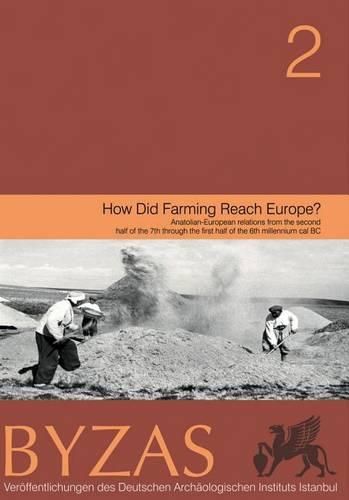Readings Newsletter
Become a Readings Member to make your shopping experience even easier.
Sign in or sign up for free!
You’re not far away from qualifying for FREE standard shipping within Australia
You’ve qualified for FREE standard shipping within Australia
The cart is loading…






In 2004 an international workshop was held in Istanbul to debate ‘one of the most important transitions in the history of mankind’. After three and a half million years as hunter-gatherers, clearly a successful way of life, why did people become food-producers? These twenty papers focus on the ‘spread of the Neolithic lifestyle from the Near East’, an idea that is still controversial, highlighting the role of Anatolia in that process, both directly and as a transit between Mesopotamia and Greece. Following Clemens Lichter’s introductory discussion of the raging debate, the contributors discuss the nature and reliability of the archaeological evidence, reassessing traditional evidence while considering new data, the Neolithisation of western Anatolia, the Neolithisation of the Balkans and Greece, and the transference of cultural elements between east and west. Several of the papers are based on case studies, such as Ulucak Hoyuek, Hoka Cesme in Thrace, and the cave of Teopetra in Thessaly, while others focus on material evidence, including Neolithic figurines, flint and pottery. All of the papers are in English. Illustrated throughout.
$9.00 standard shipping within Australia
FREE standard shipping within Australia for orders over $100.00
Express & International shipping calculated at checkout
In 2004 an international workshop was held in Istanbul to debate ‘one of the most important transitions in the history of mankind’. After three and a half million years as hunter-gatherers, clearly a successful way of life, why did people become food-producers? These twenty papers focus on the ‘spread of the Neolithic lifestyle from the Near East’, an idea that is still controversial, highlighting the role of Anatolia in that process, both directly and as a transit between Mesopotamia and Greece. Following Clemens Lichter’s introductory discussion of the raging debate, the contributors discuss the nature and reliability of the archaeological evidence, reassessing traditional evidence while considering new data, the Neolithisation of western Anatolia, the Neolithisation of the Balkans and Greece, and the transference of cultural elements between east and west. Several of the papers are based on case studies, such as Ulucak Hoyuek, Hoka Cesme in Thrace, and the cave of Teopetra in Thessaly, while others focus on material evidence, including Neolithic figurines, flint and pottery. All of the papers are in English. Illustrated throughout.